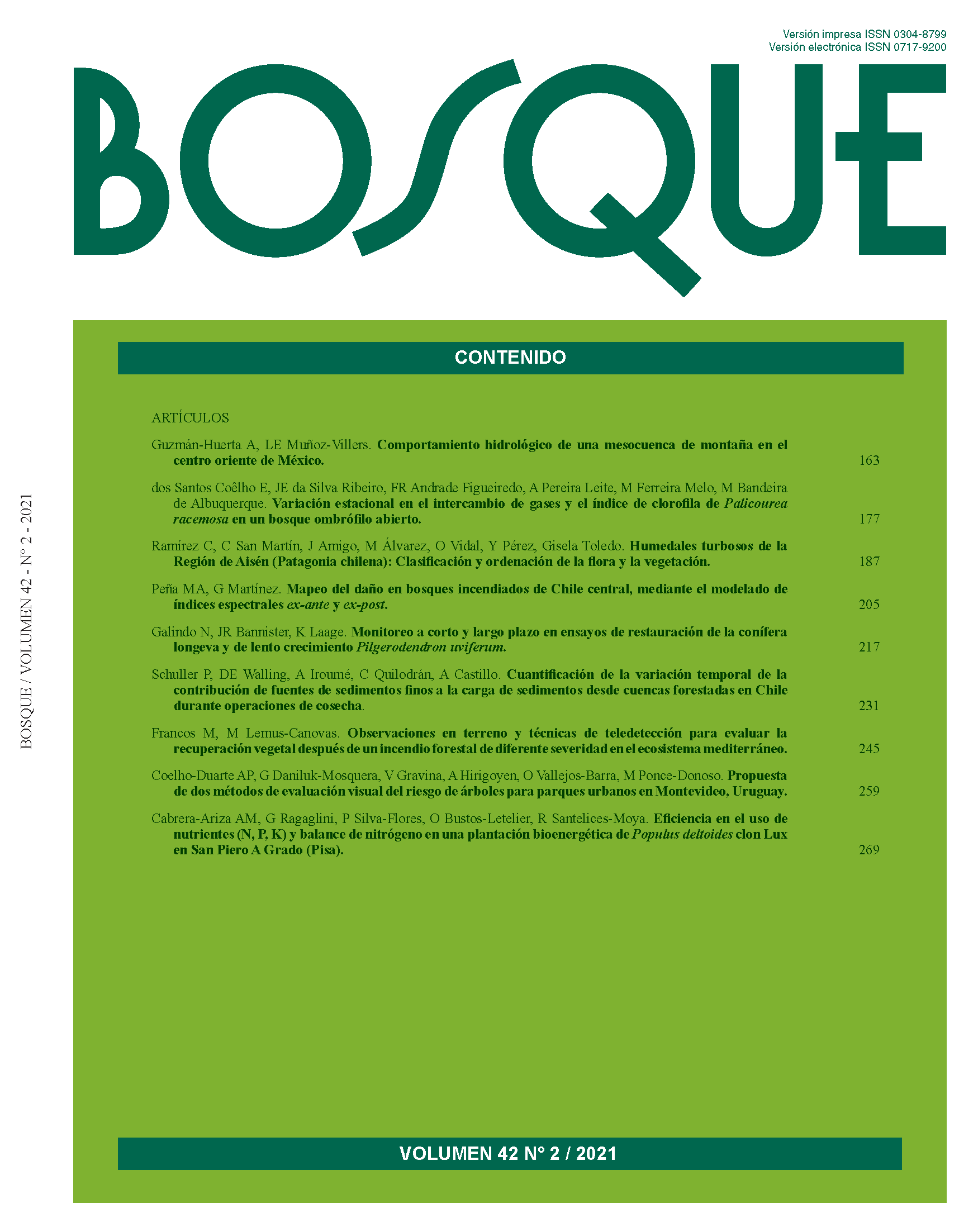Propuesta de dos métodos de evaluación visual del riesgo de árboles para parques urbanos en Montevideo, Uruguay
Contenido principal del artículo
Resumen
La evaluación del riesgo de los árboles urbanos es un desafío que numerosas ciudades deben abordar, en consideración a su climatología, gestión y heterogeneidad espacial, debido al hecho que el arbolado se encuentra en etapas de envejecimiento, sumado a malas praxis, inadecuada selección y establecimiento, entre otras, que están propiciando su eliminación temprana y, por ende, la pérdida de los servicios ecosistémicos que proveen. Por ello se desarrollaron dos métodos de evaluación del riesgo de árboles para ser aplicados complementariamente en parques urbanos, uno visual básico (VB) y otro visual detallado (VD), estructurados con las componentes de probabilidad de falla, probabilidad de impacto, consecuencia y clasificación de riesgo, siendo analizados cualitativa y cuantitativamente. Los métodos fueron aplicados en 24 árboles de los géneros Eucalyptus y Tipuana por dos grupos de evaluadores, con experiencia y sin experiencia, totalizando 192 evaluaciones. Los resultados se analizaron con un modelo lineal mixto (MLMiX), que mostró diferencias entre ambos métodos para la probabilidad de falla, donde la valoración de las ramas secundarias resultaron ser el atributo de mayor impacto. Los métodos demostraron ser adecuados para ser usados complementariamente, ya que el VB resulta ser eficaz cuando se requiere evaluar gran cantidad de árboles, mientras que el VD resultó ser más efectivo, pues fue capaz de identificar de forma más precisa los atributos del árbol que deben ser considerados para una adecuada mitigación y gestión del riesgo. Por lo anterior, se recomienda su uso combinado para la evaluación del riesgo en árboles establecidos en parques.

